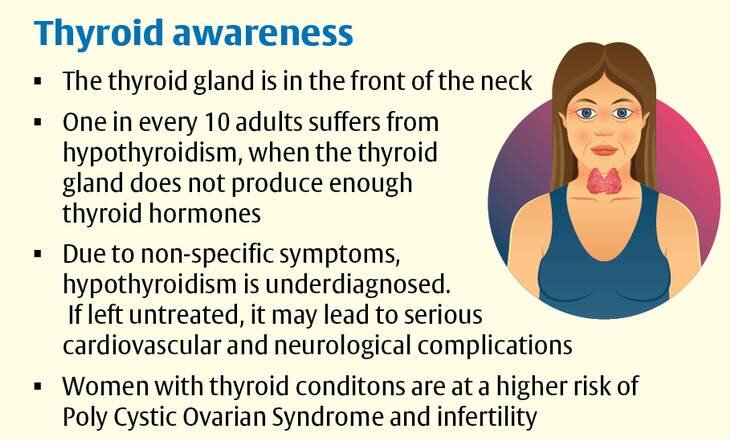Important Facts For Prelims
Making India Thyroid Aware
- 29 Jul 2019
- 3 min read
The Federation of Obstetric and Gynaecological Societies of India (the professional organization representing practitioners of obstetrics and gynecology in India) and Abbott (multinational healthcare major) have launched ‘Making India Thyroid Aware’ campaign.
- Owing to low awareness, more and more people in India are being diagnosed with thyroid-related disorders. Therefore, this campaign aims to enhance awareness of the thyroid as a disease.

- Health experts caution that thyroid may be the new Diabetes.
- Over 10% of the local population has a thyroid problem, as compared to 8% having diabetes.
- Thyroid disease is a common problem that can cause symptoms because of over or under function of the thyroid gland.
- The thyroid gland located in the front of the neck below the Adam's apple is an essential organ for producing thyroid hormones.
Common Thyroid Diseases in India
- Hypothyroidism: Hypothyroidism, also called an underactive thyroid or low thyroid, is a disorder of the endocrine system in which the thyroid gland does not produce enough thyroid hormone.
- North India recorded the maximum cases of hypothyroidism.
- Hyperthyroidism: Hyperthyroidism (overactive thyroid) occurs when your thyroid gland produces too much of the hormone thyroxine.
- Hyperthyroidism can accelerate the body's metabolism, causing unintentional weight loss and a rapid or irregular heartbeat.
- South India reported maximum cases of hyperthyroidism.
- Goiter and Iodine Deficiency Disorders: Goiter is an abnormal enlargement of the thyroid gland and the most common cause of goiters worldwide is a lack of iodine in the diet.
- Hashimoto's thyroiditis: Also known as chronic lymphocytic thyroiditis. It is an autoimmune disease in which the thyroid gland is gradually destroyed and over time the thyroid may enlarge, forming a painless goiter.
- Thyroid cancer: Thyroid cancer occurs in the cells of the thyroid. The cause of thyroid cancer is poorly understood, but may involve a combination of genetic and environmental factors.





-min.jpg)